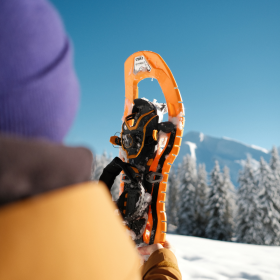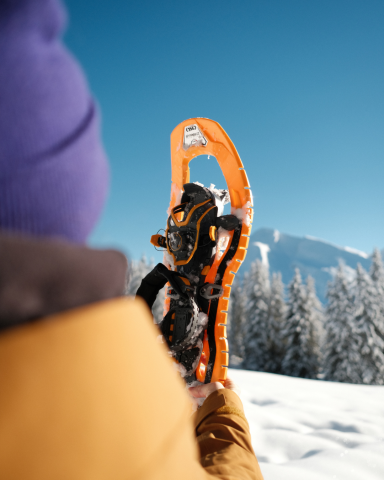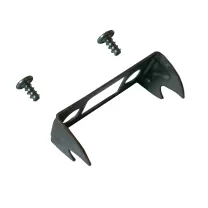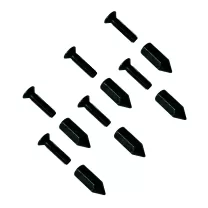
Snowshoe Maintenance at the End of the Winter Season: Practical Guide
Snowshoes are essential equipment for winter hiking enthusiasts. To ensure their durability and performance for future mountain adventures, regular maintenance is crucial. After each winter season, it's important to check the condition of your snowshoes, make necessary repairs, and store them properly. Here's our practical guide to maintaining your snowshoes and extending their lifespan.

The first step in snowshoe maintenance is cleaning them after each outing. This prevents the buildup of dirt and snow, which can damage your snowshoes over time. Use a brush or cloth to remove snow and ice. Ensure they are thoroughly dried, especially if they remained wet after your hike.
At the end of the season, wash your snowshoes with fresh water and soap to remove any residue, especially if you've hiked in salty areas. Once cleaned, dry them carefully to prevent rust formation (notably on the crampons) and premature material wear.

The bindings of your snowshoes are essential for their proper functioning. Regularly inspect them to ensure they are not worn, broken, or damaged. Pay particular attention to the straps and tightening systems for any signs of wear. If you notice defective parts, replace them before storing your snowshoes. Also, consider tightening all screws at the end of the winter season.
You can find TSL spare parts via this link.

Crampons and spikes are key elements that ensure your snowshoes grip various terrains. They are also the most frequently replaced parts on a pair of snowshoes. Check that they are not worn or damaged, that the spikes are still in place, and that there are no loose parts. If the crampons show signs of excessive wear, it's recommended to replace them.
You can find TSL spare parts via this link.

The frame and bindings of your snowshoes are often made of plastic. It's essential to check for cracks or deformations in these materials. If you detect significant damage, it may be necessary to repair your snowshoes before storing them. This ensures they are ready for use at the start of the next season.
You'll find all the information regarding TSL snowshoe repairs at the end of this guide.
5.Optimal Storage of Your Snowshoes
Storing your snowshoes plays a crucial role in their maintenance. Store them in a dry place, away from moisture and extreme temperatures. Avoid storing them in a damp garage or areas where melting snow could damage them. If possible, hang your snowshoes to prevent deformation or impacts during storage.
If you don't already have one, consider the TSL snowshoe cover! Additionally, there are spikes/crampons covers suitable for different snowshoe models, protecting them during transport or storage and preventing unintended impacts.


Between 60 and 80 parts are used for a pair of snowshoes; all these parts are interchangeable and repairable.
At TSL Outdoor, our mission is for you to keep your TSL products for life, which is why we offer spare parts and quality after-sales service to assist you in maintaining your snowshoes (and other TSL products).
- If you're handy, click on this link or the image to access TSL's DIY repair videos to fix your TSL products yourself!
- If not, don't worry; our after-sales service will answer your questions, handle your requests, and, most importantly, put all their energy into expertly repairing your TSL products made in France.
Click here to access the after-sales contact form: easy and quick, it's the best way to get in touch with us!

Finally, with nearly 80 TSL-approved Repair Centers, you'll have no trouble finding a repair point for TSL products near you!
Click on the image or this link, then check the "Repair Center" service box to find the nearest establishment to you.
If Your Snowshoes Are Truly at the End of Their Life…
If your snowshoes are still in good condition but you still wish to part with them, you can donate them to a reuse organization or sell them second-hand.
Here is the list of partner associations we recommend:
• La Ressourcerie du Beaufortain
• La Ressourcerie du Val d’Arly
If your product is no longer usable, it remains recyclable! You can drop it off for free at a sports store or recycling center in the area dedicated to Sports and Leisure Articles (ASL).
Written by Amélie, April 2025.






